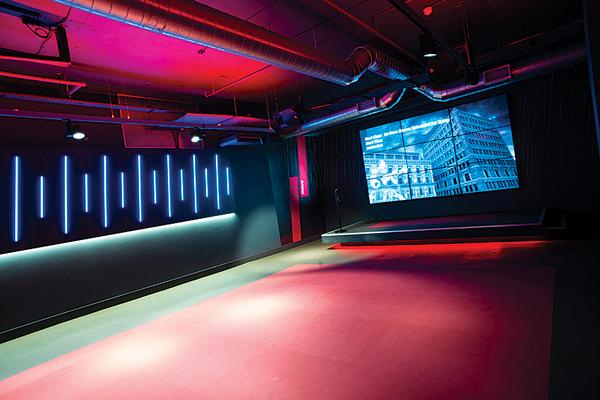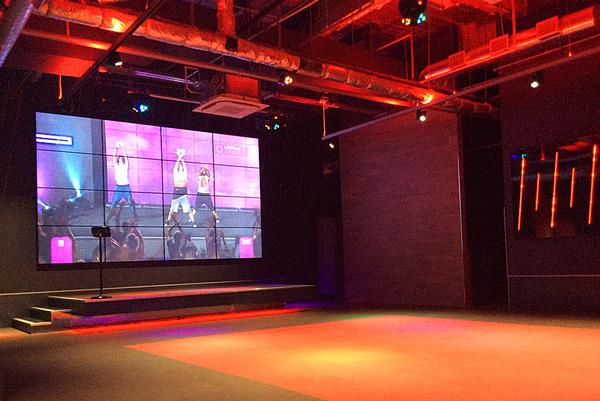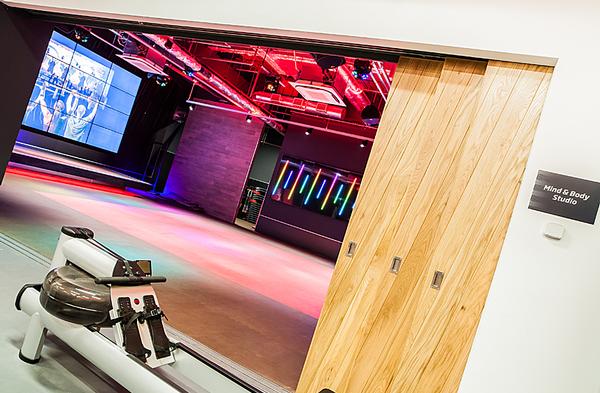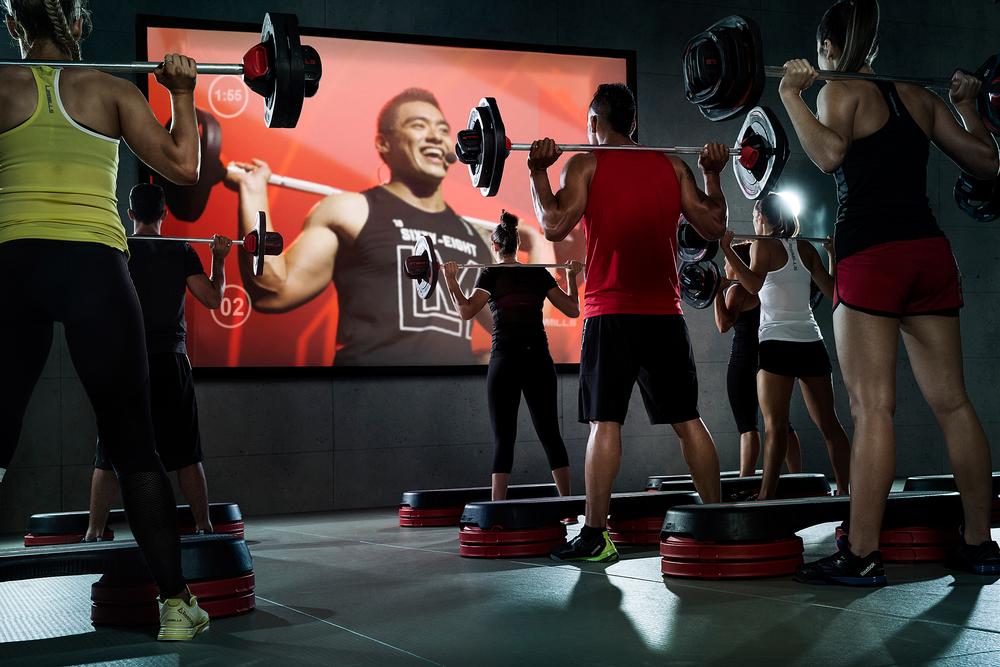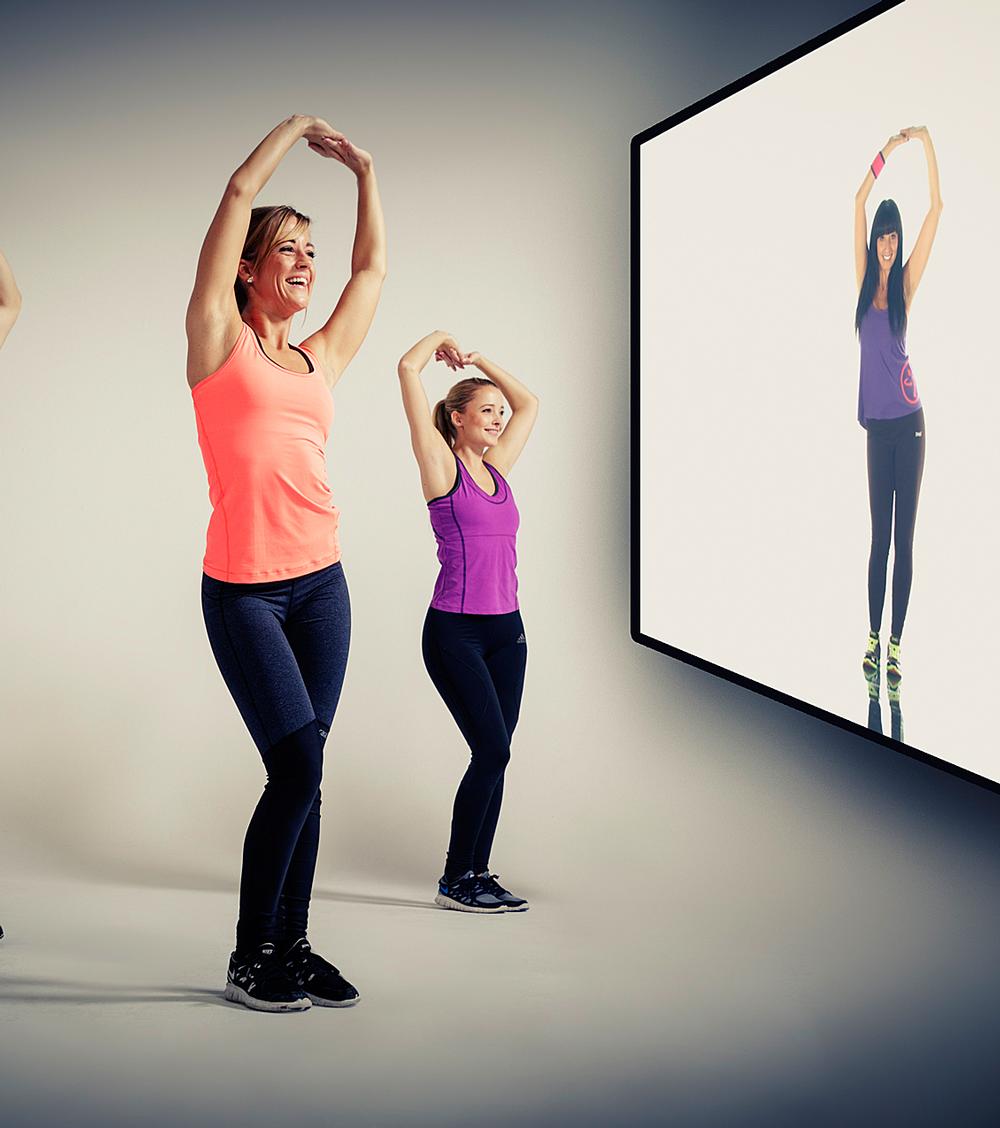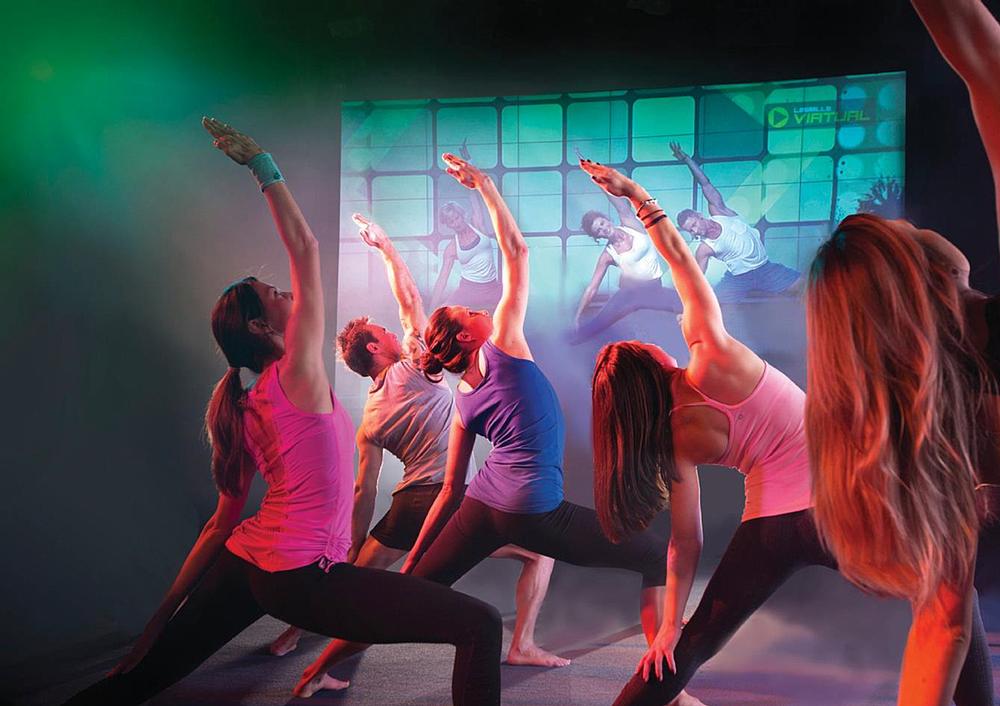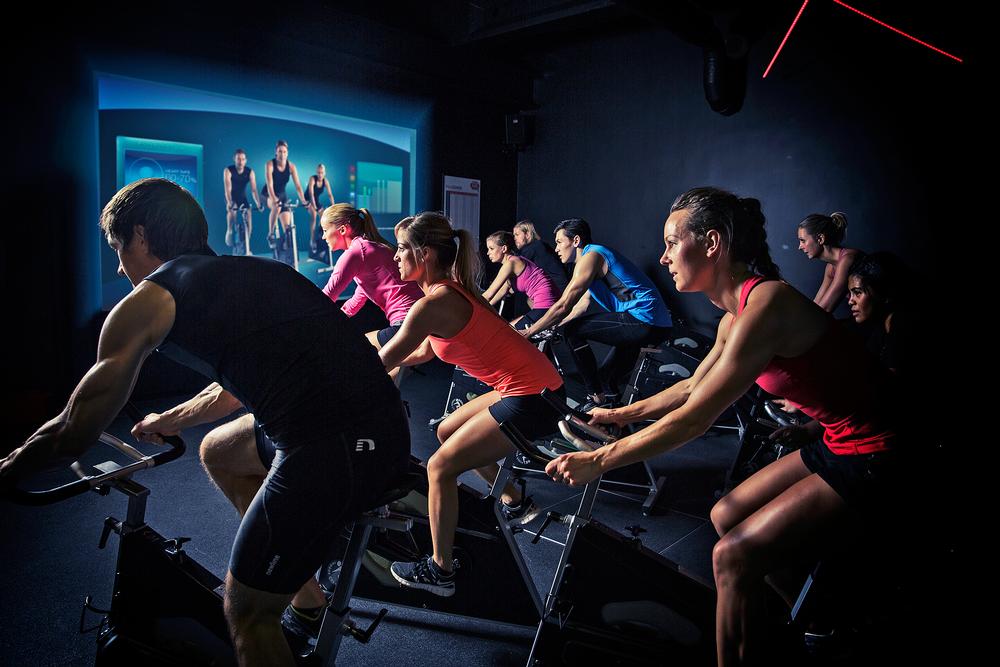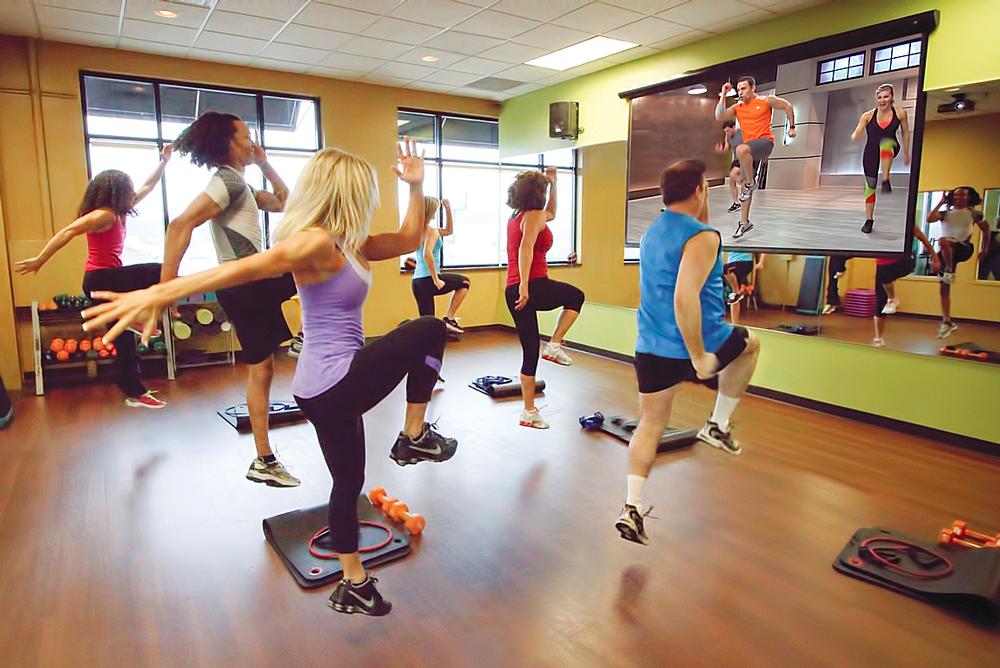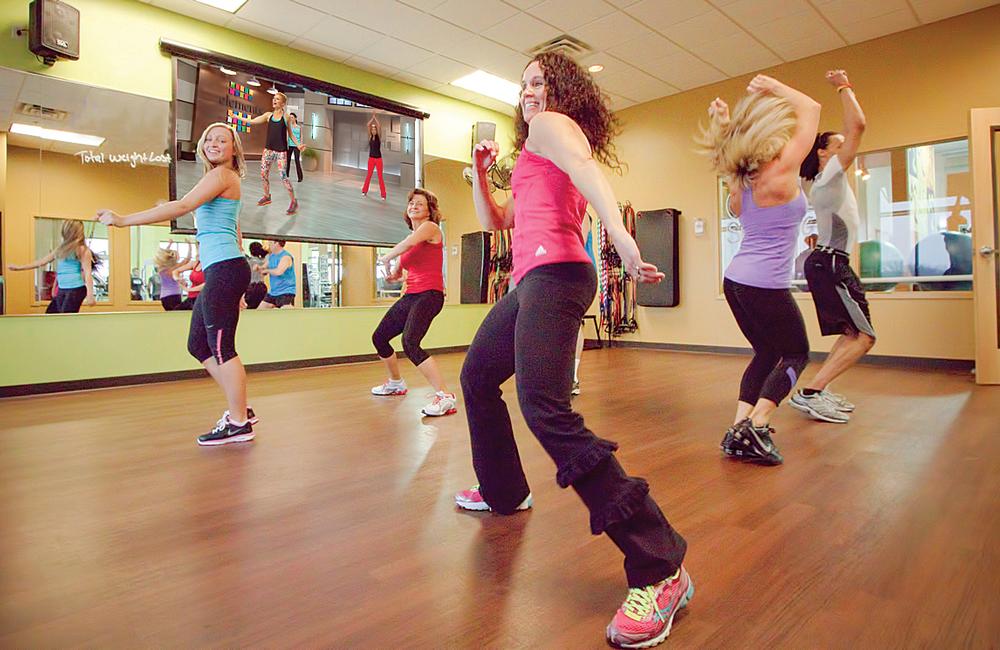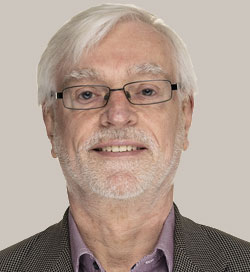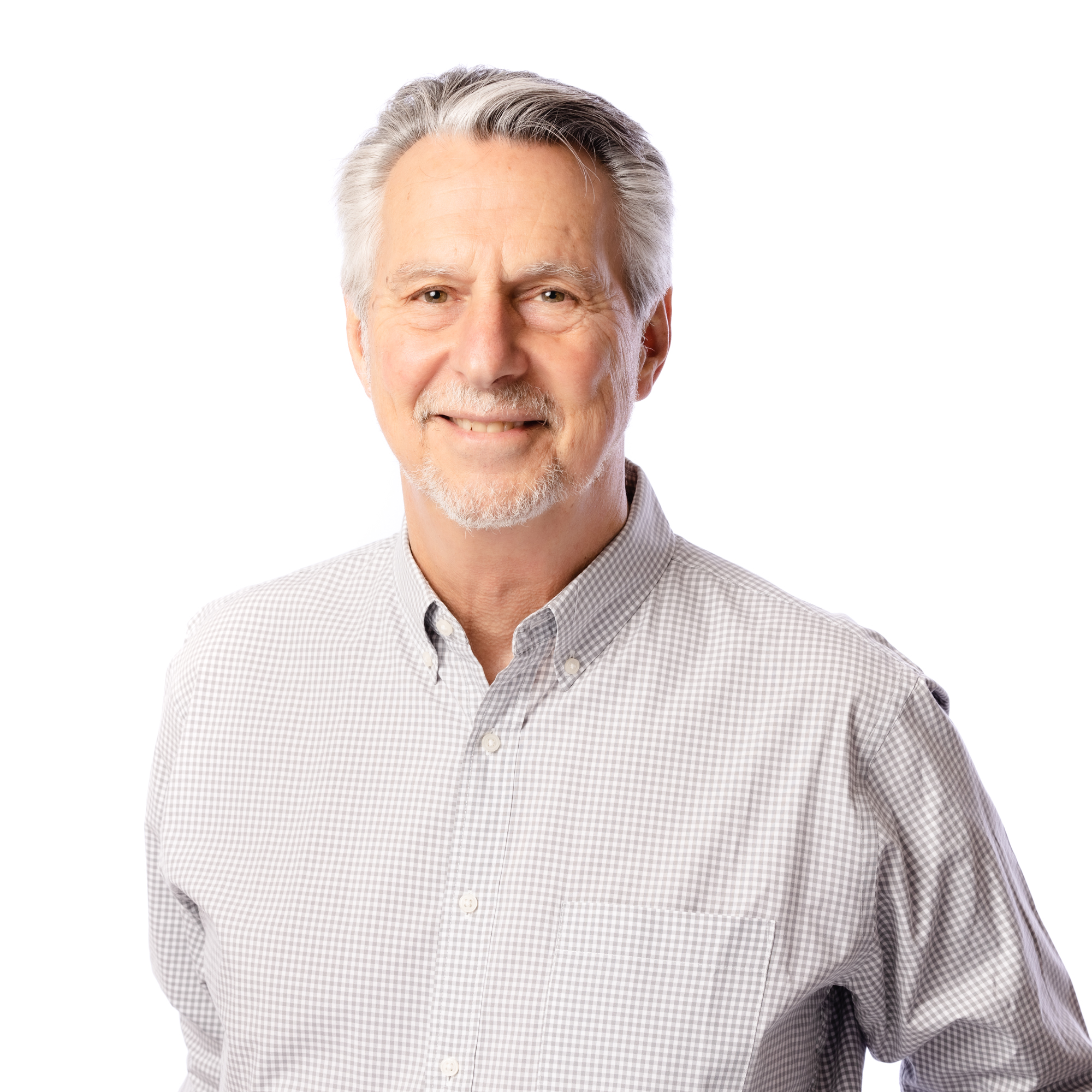Few people would argue that building beautiful group exercise and cycling studios and then not running classes in them for the majority of the day makes good business sense – which is one key reason why, over recent years, a growing number of operators have turned to virtual classes.
Martin Seibold, managing director of Fitness First UK, explains: “We’re constantly pushing the boundaries of our member experience and virtual helps us do this; it adds value to our studio space and gives members flexibility and more varied training options.
“We see the investment return through its marketing value and improved opportunities to retain group fitness users. Additionally, our club managers are reporting that virtual feeds a lot of new people into our live classes, which increases the value proposition of virtual still further.”
In a different segment of the industry, low-cost operator BasicFit uses virtual in the majority of its more than 350 clubs across Europe. CEO Rene Moos explains why: “The virtual classes allow us to increase our offering significantly at a cost of less than two treadmills. Approximately 25 per cent of our members make use of the virtual classes and it’s clear that it attracts members we would not otherwise have had. When you compare virtual to any other service or product, the return on investment is very high.”
One of the largest club groups in the world, US-based 24 Hour Fitness, has recently started implementing virtual across its more than 650 studios. “Virtual enhances the overall member experience and is a highly effective member acquisition and digital marketing vehicle,” says executive vice president Tom Lapcevic.
“We use virtual for many different applications. Firstly, virtual classes introduce our members to group exercise in a non-intimidating, fun and convenient manner. Second, virtual injects audiovisual energy and powerful member marketing and messaging into our live classes. Third, virtual is the ideal platform to uniformly and simultaneously train our 20,000+ employees scattered across the country. And finally, virtual is a powerful communication platform for our third-party sponsors and advertisers.”
Virtual success
As with all new technologies, getting the application right is a challenge. Although virtual is now fairly widespread and growing fast, there are still significant differences in terms of the level of participation across clubs offering virtual classes.
So what do the operators with the highest participation levels do differently from those with lower numbers? “Club groups that use virtual as a tool rather than a product are significantly more successful, as they understand what’s required to integrate virtual into their member journey,” says Paul Bowman of Wexer Virtual. “They recognise that the tool is dynamic and ever-evolving, and therefore embrace this with a clear integration and execution strategy. Highest participation is seen when virtual is managed like live programming, through attendance tracking, launch events, and regular new releases and re-launches.”
Garrett Marshall from Fitness On Demand agrees. “A great virtual group fitness programme needs implementation, not just installation,” he says, adding that promotion that’s mindful of the audience and the traffic demands of the particular facility determine overall effectiveness.
Marshall’s top tips for virtual success are firstly to tailor programming to the audience – including identifying opportunities to go beyond conventional programming to accommodate special populations.
Secondly, he says clubs must get the right balance of instructor-led classes, pre-scheduled virtual classes and on-demand access – all at the right times of the day – to attract the widest audience. Just as offering a variety of formats attracts a variety of people, so too will offering the right mix of class types, he explains.
Finally, he recommends clubs fully integrate virtual with live programming. This means using the right language when talking about virtual, educating staff, and presenting one consolidated timetable to members. The desired outcome for the team should be focused on increasing participation across the entire group fitness department.
The team at Wellbeats, another of the original virtual class providers, believes the tipping point for virtual occurred when clubs realised virtual group fitness isn’t necessarily a replacement for live, but rather a supplement to it. “While it will never replace live instruction, it will continually progress how clubs can engage and support more of their membership base,” says CEO Jason Von Banks.
“Virtual can remove barriers that exist with traditional programmes: the flexibility to offer a large number of virtual classes means it’s possible to offer age-appropriate sessions, as well as programming to serve niche groups. Classes of different lengths can be made available 24/7. And virtual can be more emotionally accessible: letting people try out group exercise without feeling intimidated.”
Les Mills International CEO Phillip Mills is both a provider of virtual classes and a club operator. He has implemented virtual programming in his own New Zealand clubs and observed the growing momentum of the trend around the world. “It’s actually been the low-tech stuff that’s been holding adoption up – the ability to get the studio properly dark and so on,” he observes. But when it’s done well, the impact can be significant, he adds: “Usage of Les Mills cycle studios has gone up 50 per cent by adding 30 virtual classes a week to the timetable.”
Not just virtual
Creating the right environment is certainly key, as Fitness First’s Seibold explains: “Virtual is a key focus in our studios – our Move Virtual schedule includes over 250 classes on demand – and our new clubs include specially designed studios where we can control the ambience through automation of mirror screens, lighting and blinds to create a cinematic feel. We believe that makes the way we deliver virtual classes exclusive to Fitness First.”
Tony DeLeede, CEO of Fit ’n’ Fast in Australia, is also taking the delivery of virtual in a direction of his own. “We believe that, to maximise the value of virtual, we need to enhance the experience in the virtual room. We’ve significantly improved the sensory experience in our rooms, stimulating the three main senses: sight, sound and smell. When the member presses the content button, sight (lighting and content), sound (music) and smell (lavender, eucalyptus or frangipani) will be delivered in an automated way to provide what we think is a unique and engaging experience.”
Enhanced content
But it isn’t just about the environment: high quality content is also critical. When virtual emerged, classes were often fairly low-budget productions or re-use of DVD productions meant for home usage. But as virtual has grown, production budgets have increased and with it the quality of the content, which is now developed specifically for virtual.
Moos was an early adopter and observes: “I believe a significant driver for the rapid growth of virtual is that the quality and variety in content has increased significantly. It’s no different from going to the cinema: the cinema can be the best in the world, but if the film isn’t great, people aren’t engaged and they either leave or they don’t come back.”
“Every year, we invest millions filming the latest workouts in a way that will inspire the 100,000 instructors teaching them,” says Mills. “We started out repurposing this footage for virtual classes, but now we create virtual-specific content. This includes tailored graphics and cues, along with all the things that we know effectively engage exercisers: fresh choreography, hit music and the world’s best instructors.”
Meanwhile, a few operators have engaged in producing their own content. DeLeede explains why his operation decided to go down that route. “We were very early adopters of virtual, and the main challenge for us was that the majority of content available at that time wasn’t really suitable for our beginner members who would use virtual. We also found that most of the content wasn’t produced to fit our scheduled class timeslots.
“Because of this, we started making what we think is the correct type of content for the beginner exerciser – and in more consistent timeframes, so they fit perfectly into our clubs’ class schedules.”
An alternative to producing your own content is private labelled content, available from suppliers such as ClubJoy. “Big fitness chains put a lot of money into building their brand, so they need virtual content that fits with their look and feel,” explains CEO Marc Neijland. “We also deliver the workouts in the native language for each club. The feedback we get is that these two USPs are creating a lot of extra value.”
Virtual future
Virtual was initially thought out as a studio-optimising tool – but some operators are now taking it to the gym floor. “We’re seeing first-movers using a virtual set-up on the gym floor to give members programming when fitness instructor interaction isn’t possible,” says Bowman.
Virtual is also expanding outside the four walls of the clubs, with more virtual class suppliers offering – or preparing to offer – streaming services that allow members to do classes online and through apps. This out of the box thinking is a natural development, with clubs already coming up against external technologies: wearable devices, fitness apps and streaming services. “Not only are virtual classes here to stay, but they’re just the tip of the iceberg,” concludes Mills. “As technical capacity expands and creativity fires, there’s huge scope to grow this category.”








